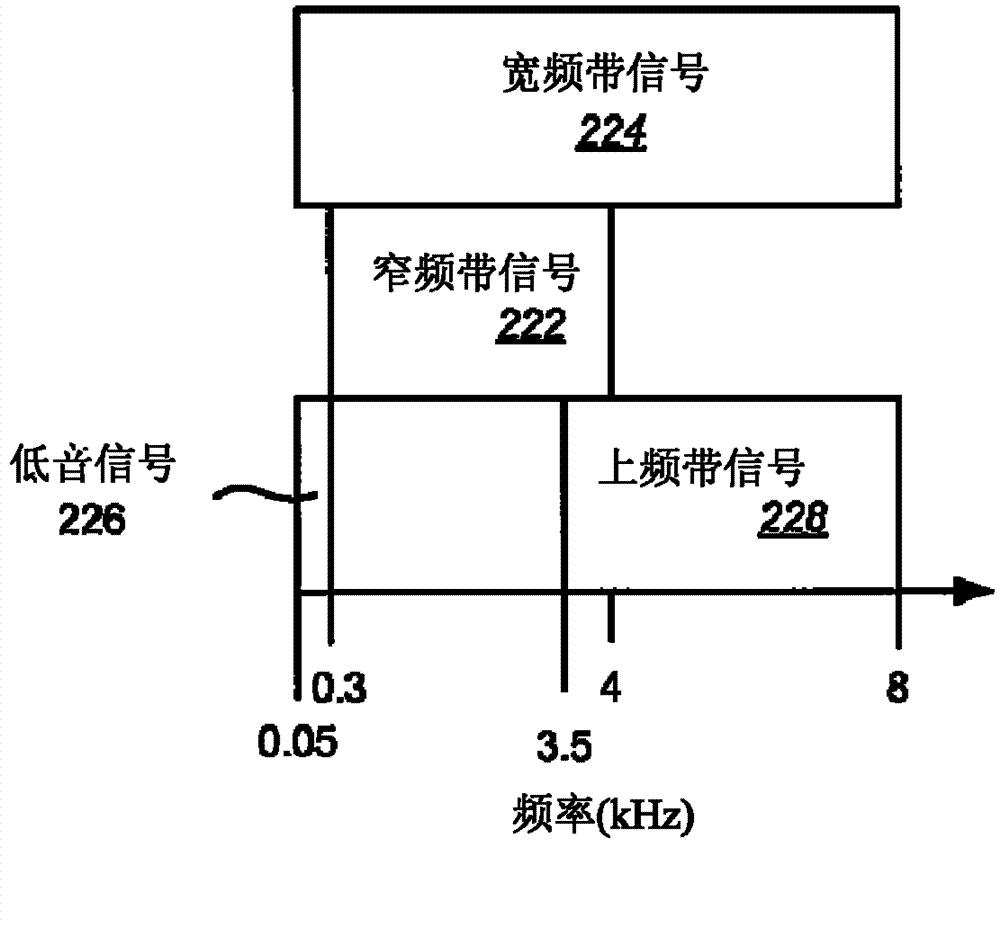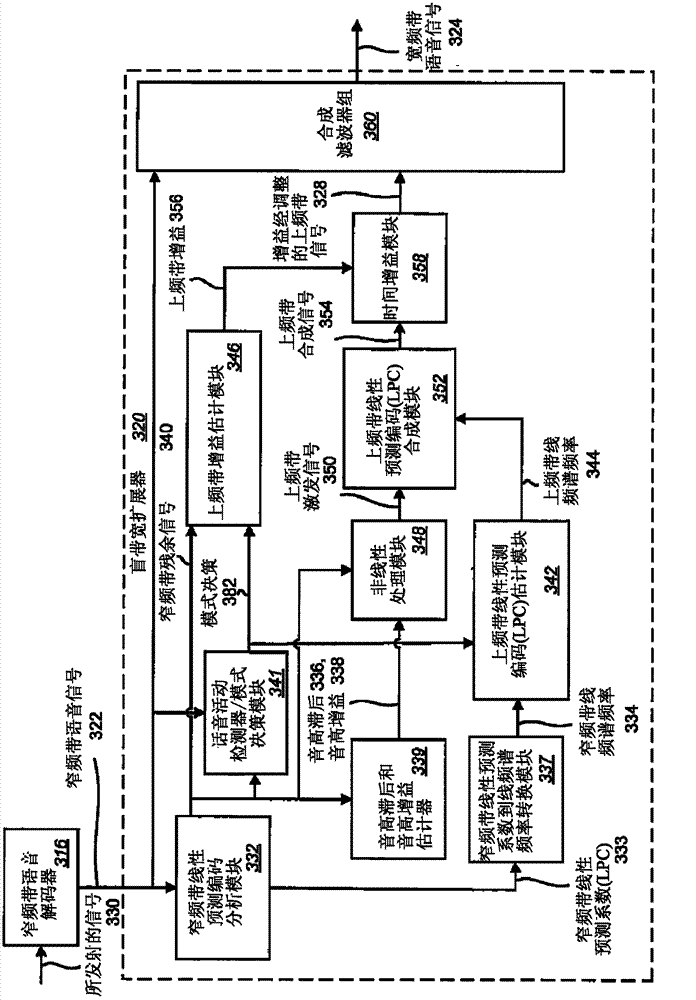Method and device for determining upperband signal from narrowband signal
A narrow-band, up-frequency technology, applied in the field of communication systems, can solve problems such as poor voice quality at the receiver
- Summary
- Abstract
- Description
- Claims
- Application Information
AI Technical Summary
Problems solved by technology
Method used
Image
Examples
Embodiment Construction
[0026] Listening to wideband speech (50Hz to 8000Hz) is desirable (as opposed to narrowband speech) because it is of higher quality and generally sounds better. In many cases, however, only narrowband voice is available because voice communications via traditional landline and wireless telephone systems are often limited to a narrowband frequency range of 300 Hz to 4000 Hz. Wideband voice transmission and reception systems are becoming more popular, but will require major changes to existing infrastructure, which will take considerable time. Meanwhile, blind bandwidth extension techniques are being used which act as a post-processing module acting on the received narrowband speech to extend the bandwidth of the narrowband speech to the wideband frequency range without any side information from the encoder. The blind estimation algorithm estimates the upper frequency band (3500 Hz to 8000 Hz frequency band) and lower frequency (50 Hz to 300 Hz) content entirely from the narrowb...
PUM
 Login to View More
Login to View More Abstract
Description
Claims
Application Information
 Login to View More
Login to View More - R&D
- Intellectual Property
- Life Sciences
- Materials
- Tech Scout
- Unparalleled Data Quality
- Higher Quality Content
- 60% Fewer Hallucinations
Browse by: Latest US Patents, China's latest patents, Technical Efficacy Thesaurus, Application Domain, Technology Topic, Popular Technical Reports.
© 2025 PatSnap. All rights reserved.Legal|Privacy policy|Modern Slavery Act Transparency Statement|Sitemap|About US| Contact US: help@patsnap.com



